8. Religious Orders and the Consolidation of the Catholic School System
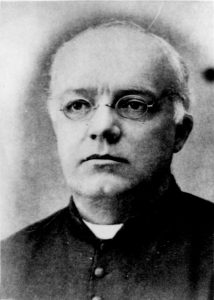
The parish priest Charles-Édouard Milette (1854-1908), primarily responsible for the arrival of religious orders in Magog. Source: Magog Historical Society, PR002 Collection Bibliothèque Memphrémagog\album 2\photo # 384
The very rapid growth of the French-Canadian community in Magog as of the 1880s required the Catholic school system to adjust. In response to the sudden increase in school needs, Charles-Édouard Milette, the parish priest, relied on the arrival of teaching religious orders.
It is in this context that the Soeurs Marianites de Sainte-Croix et des Sept Douleurs arrived in 1885, the Frères du Sacré-Cœur in 1895 and the Filles de la Charité du Sacré-Cœur de Jésus in 1907. It is also in this context that the following schools were built: College Street School in 1884 (which became St-Patrice Academy in 1895), the convent of the Sœurs de Sainte-Croix in 1891 (which became the Sacré-Cœur convent in 1909) and the new St- Patrice Academy in 1915.
EBesides the construction of buildings and the arrival of new teachers, one of the most important impacts on the clericalization of the Catholic school system was the near disappearance of coeducational schools among Catholics. With a few exceptions, the College Street school, for example, the male religious orders taught only boys and the female orders taught only girls.
The separation according to gender had an impact on school attendance because it introduced new constraints. In certain cases, girls tended to quit school prematurely. They “[were] often confronted with the need to attend a fee-paying and more expensive school in order to finish primary level classes, given that senior-level classes [were] offered instead by boarding schools”,[1] which was not the case for boys
On the other hand, separating boys and girls required the construction of twice as many schools. However, if there was no school for boys in their neighbourhood, boys in the eastern part of Magog were likely to enter the workforce sooner than boys from the downtown area. Because the first Magog-East school for boys opened only in 1937, boys had to “attend the school of another parish or […] put an end to their schooling in order to go to work in the factory not far from home.” [2]
Despite these limitations, it is important to remember that the number of school places devoted to Catholic children increased greatly thanks to the arrival of religious orders.
Religious Orders in Magog
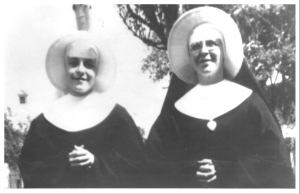
The Sœurs Marianites de Sainte-Croix et des Sept Douleurs arrived in Magog in 1885. Source: Magog Historical Society, PR002 Collection Bibliothèque Memphrémagog\album 2\ photo # 438.
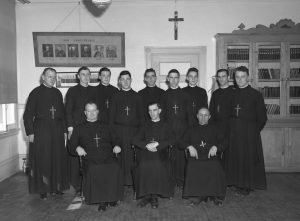
Les Filles de la Charité du Sacré-Coeur de Jésus (F.C.S.C.J.) arrived in Magog in 1907. Source: Magog Historical Society, PR002 Collection Bibliothèque Memphrémagog\album 3\photo # 456.
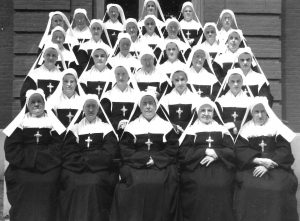
Les Filles de la Charité du Sacré-Coeur de Jésus (F.C.S.C.J.), arrivées à Magog en 1907. Source: Société d’histoire de Magog, PR002 fonds Bibliothèque Memphrémagog\album 3\photo # 456.
The Schools
College Street School
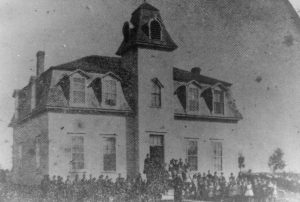
From 1885 to 1898. Source: Magog Historical Society, PR002 Collection Bibliothèque Memphrémagog\album 2\photo # 444.
The St-Croix/du Sacré-Cœur/St-Patrice Convent
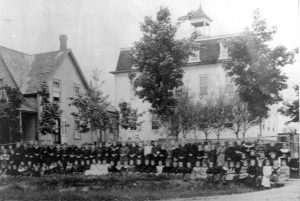
From 1891 to 1912. Source: Magog Historical Society, PR002 Collection Bibliothèque Memphrémagog\album 2\photo # 437.
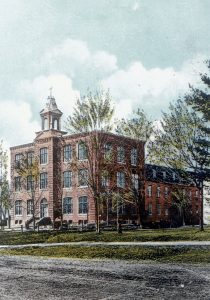
From 1912 to 1944. Source: Magog Historical Society, PR002 Collection Bibliothèque Memphrémagog\album 2\photo # 440.
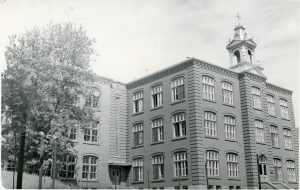
From 1944 to 1974. Source: Magog Historical Society, PR009 Collection Jacques Boivert\Sœurs de la Charité
St-Patrice College/Academy
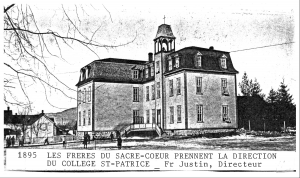
From 1898 to 1914. Source: Magog Historical Society, PR002 Collection Bibliothèque Memphrémagog\album 3\photo # 475.
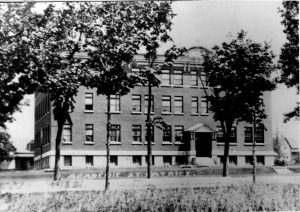
From 1914 to 1934. Source: Magog Historical Society, PR002 Collection Bibliothèque Memphrémagog\album 2\photo # 445.
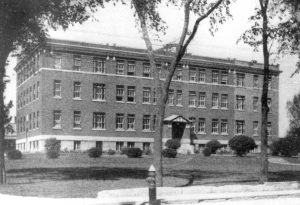
From 1934 to 1960. Source: Magog Historical Society, PR002 Collection Bibliothèque Memphrémagog\album 2\photo # 450.
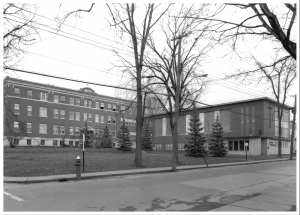
From 1961 to today. Source: Magog Historical Society, PR002 Collection Bibliothèque Memphrémagog\album 3\photo # 470.
The Students
At the St-Croix/du Sacré-Cœur/St-Patrice Convent
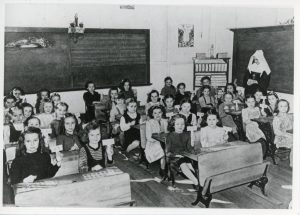
Sister Gabrielle des Anges (F.C.S.C.J) and her pupils (n.d.). Source: Magog Historical Society, PR002 Collection Bibliothèque Memphrémagog\album 3\photo # 457
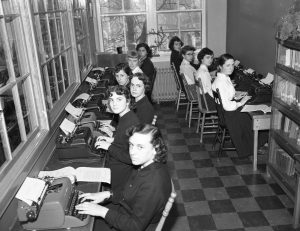
Business course students practising typing in March 1953. Source: Magog Historical Society, PR024 Collection Studio R.C.\série commerciale\440-002.
At St-Patrice Academy
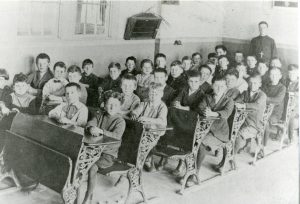
Sacré-Coeur pupils and Brother (n.d.). Source: Magog Historical Society, PR002 Collection Bibliothèque Memphrémagog\album 3\photo # 463.
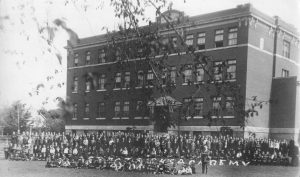
LStudents of the Academy (photograph taken between 1914 and 1934). Source: Magog Historical Society, PR001 Collection Jean-Maurice Lapalme\photo # 285.
[1] Alain R. Roy (Master’s Thesis) Le développement de l’instruction publique catholique à Magog : ses rapports avec le processus d’industrialisation, 1879-1943, Université de Sherbrooke, 1995, p. 101.
[2] Ibid. p. 121.

